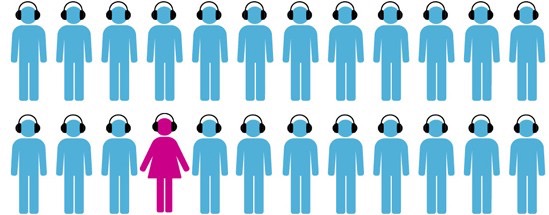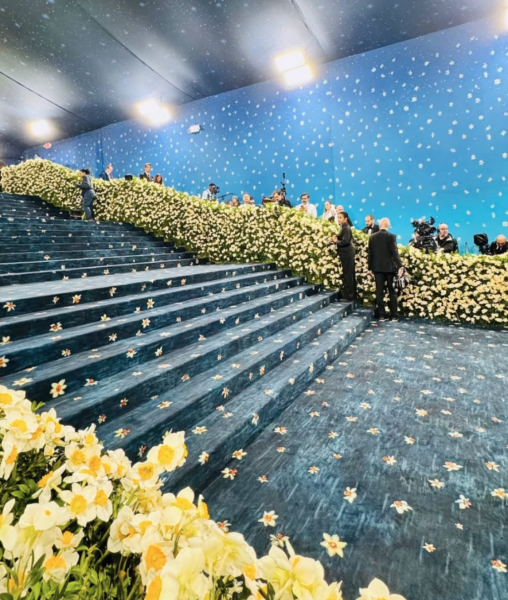Where Are All The Women?
Music has no gender, no preference and no eyes, so why is its industry, much like many other industries, still lurking in the shadows of patriarchy?
The music industry as a whole experiences a gender gap, but in the electronic dance industry, women are especially rare.
Women in the industry consistently face issues of objectification, sexualization, and negative stereotyping. In a 2013 Huffington Post article, journalist Sara Gates highlighted that often women are perceived to not have the technical abilities to produce.
The Nashville Scene, an acclaimed music newspaper, revealed, “Women represent less than 5 percent of producers and engineers industry wide.” This staggering imbalance of women to men in the music industry is two steps back in the modern world that is taking fast paces towards equality.
According to Female Pressure, an international network of women artists, of all the music festivals around the world, only a mere 10 percent of the performers are female.
An infographic showing the gender divide within music labels and festival performers courtesy of Female Pressure.
Female Pressure illuminated that, “When asked about the reasons for this glaring inequality, curators often claim that there are simply not enough female artists.”
They claim, “It’s not our number, it’s about how and if we are recognized.”
Is this lack of women due to natural factors of life, like raising children?
Associate Professor of Berklee College of Music, Susan Rogers, theorizes with BCC over this notion. Rogers explained, “In order to be able to maintain that level of focus and attention and dedication to your craft, it has to come at the expense of reproduction.” Rogers explored the possible factor of women simply not wanting the demanding lifestyle.
But this unequal ratio of male to female could also be attributed a mostly male history. Not only are the vast majority of electronic music pioneers male, but today’s biggest names are also ones of men. Just getting past the sense of inferiority and the idea of having to break into a male-dominated field is intimidating and difficult to overcome for many woman.
Tamara Montenegro, a sound artist and producer, shares her perspective. “As an artist, one is their own boss, their own enterprise and calling the shots in a fervently aggressive industry is not always easy,” she notes.
Despite the inherent industry issues, the future is looking bright for women.
Over the past 5 or so years, electronic dance music has soared into popularity, and as it rises from the underground, more women than ever before are sharing the spotlight.
Montenegro notes that today” [there] are younger and younger girls adopting technology in a completely flawless way.”
With the lack of industry support, interest groups seem to be holding the weight of the female music community on their backs.
Organizations like Women In Music (WIM), Female Pressure and countless others are dedicated to change.
Having worked closely with WIM, Montenegro expresses that, “It allows [one] to find a place of mutual development instead of having to fight your [own] way through.”
These interest groups work by hosting events, seminars, support and creating an international community for women in the music industry.
But even amongst the seemingly female musical revolution, women still have a long way to go. Tamara Montenegro states, “These are exciting times [and] I wonder what will be of us in another 10 years.”








